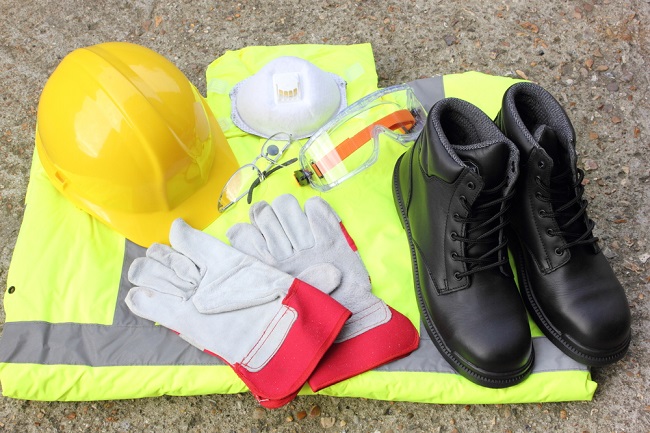Getting to know Personal Protective Equipment and Types
Wearing personal protective equipment (PPE) while working can prevent and reduce risk For some high-risk jobs, personal protective equipment must be worn. However, the types of personal protective equipment that must be worn are not the same, depending on the type of work performed. .
Personal protective equipment is equipment that must be used to protect workers from hazards can cause injury or serious illness related to his work. Personal protective equipment has been specifically designed according to the type of work, for example PPE for construction workers will not be the same as PPE for workers in the laboratory.

All PPE equipment must meet applicable standards and requirements, such as clean, fit and comfortable to wear by workers, and must be replaced periodically if it is not functioning properly and has expired.
Types of Personal Protective Equipment
The obligation to wear PPE has been agreed by the government through the Ministry of Manpower and Transmigration of the Republic of Indonesia. The shape of the tool depends on its function, which is:
1. Head protection gear
Head protection gear functions to protect the head from impact, blow or head injury due to falling hard objects. This tool can also protect the head from heat radiation, fire, chemical splashes, or extreme temperatures.
The type of head protective equipment consists of a safety helmet, hat or head covering and hair protectors.
2. Eye and face protection devices
This protective device serves to protect the eyes and face from exposure to hazardous chemicals, gases and particles that float in air or water, splash small objects, heat, or steam.
Personal protective equipment that covers the face and eyes is also important to be used to reduce the risk of health problems or injuries resulting from exposure to radiation, exposure to light, and the impact or blow of hard or sharp objects.
Tools eye protection that is commonly used is special glasses or spectacles and goggles. While the face protective equipment consists of a face shield (face shield) or a full face mask, which is a mask that covers all parts of the face.
3 . Ear protection devices
These earplugs consist of ear plugs (ear plugs) or ear muffs (ear muffs) which serve to protect ears from noise (noise pollution) or air pressure.
4. Respiratory protection device
The function of this device is to protect respiratory organs by channeling clean air or filtering exposure to harmful substances or objects, such as microorganisms (viruses, bacteria, and fungi), dust, mist , steam, smoke, and certain chemical gases, so that they are not inhaled and enter the body.
Respiratory protection devices consist of several components, namely:
- Masks.
- Special tubes or cartridges for delivering oxygen.
- Submersible tanks and regulators, for workers who work in water.
If the worker experiences breathing problems at work, ideally breathing apparatus is also available, such as masks and oxygen cylinders.
5 . Hand protective equipment
Hand protection or gloves protect the fingers from fire, hot or cold temperatures, radiation, electric current, chemicals, impact or blow, scratched by sharp objects, or infection.
These gloves are made of various materials, depending on the needs and the work. These gloves are made of metal, leather, canvas, cloth, rubber, or special material to protect the hands from certain chemicals.
6. Foot protective equipment
This tool serves to protect the feet from impacting or being crushed by heavy objects, pierced by sharp objects, exposed to hot or cold liquids and dangerous chemicals, and slipped due to slippery surfaces. Types of protective equipment include rubber boots (boot) and safety shoes.
7. Protective clothing
Protective clothing functions to protect the body from extreme heat or cold, exposure to fire and hot objects, chemical splashes, hot steam, impact, radiation, animal bites or stings, and viral, fungal, and bacterial infections.
The type of protective clothing consists of vests, aprons or coveralls>), jackets, and one-piece coveralls (one piece coverall).
8. Safety belts and straps
Some jobs require workers to work in dangerous positions, such as at high altitudes or in narrow spaces under the ground. These safety belts and straps serve to limit the movement of workers so as not to fall or fall out of a safe position.
9. Buoys
Buoys are used by workers who work on water or on the surface of the water so they can float and not sink. This life jacket consists of a life jacket or life vest. It is important to remember that the use of personal protective equipment is very important to protect yourself from work accidents. But unfortunately, there are still many workers who are reluctant to use PPE on the grounds that it is uncomfortable, hassle, weight, or tightness. . Especially if it has been determined by company and government regulations. The aim is to prevent serious health problems and injuries that are potentially life threatening or causing disability.
Label : Healthy living
Comments
Post a Comment